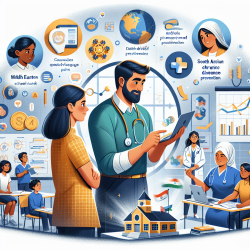Introduction
In the world of online therapy, particularly in speech-language pathology, making data-driven decisions is crucial. One innovative approach that can significantly enhance the efficiency and effectiveness of therapy sessions is the application of geometric programming in optimizing biotechnological systems. This blog will explore the findings from the research article "Optimization of Biotechnological Systems through Geometric Programming" and how these can be applied to improve online therapy services.
Understanding Geometric Programming
Geometric programming (GP) is a mathematical technique used to solve certain types of optimization problems. It is particularly effective for problems where the objective function and constraints are expressed as sums of monomials, known as posynomials. This method is highly efficient and can handle large-scale systems, making it ideal for complex biotechnological models.
Application in Online Therapy
For practitioners in online therapy, especially those working with children, the ability to optimize therapeutic interventions is invaluable. By applying geometric programming, therapists can:
- Enhance the precision of therapy models, ensuring that interventions are tailored to the specific needs of each child.
- Improve the efficiency of therapy sessions by optimizing the use of resources and time.
- Facilitate better outcomes through data-driven decision-making, leveraging the power of computational models to predict and enhance therapy success.
Encouraging Further Research
While the application of geometric programming in online therapy is promising, it is still a relatively new area of exploration. Practitioners are encouraged to delve deeper into this field, experimenting with different models and techniques to further enhance therapy outcomes. The research by Marin-Sanguino et al. provides a solid foundation for such exploration.
Conclusion
Incorporating geometric programming into online therapy practices offers a pathway to more efficient and effective therapeutic interventions. By optimizing the biotechnological systems that underpin therapy models, practitioners can ensure that they are providing the best possible care for their clients. For those interested in exploring this further, the original research paper offers a comprehensive overview of the methodologies and applications of geometric programming in biotechnological systems.
To read the original research paper, please follow this link: Optimization of biotechnological systems through geometric programming.










